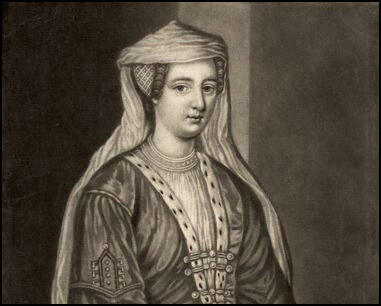Elizabeth de Clare
Elizabeth de Clare, the youngest daughter Gilbert, 9th Earl of Clare, was born on 16th September 1295. Elizabeth married John de Burgh, son of the Earl of Ulster, when she was 14 but he died five years later. While Elizabeth was waiting for her inheritance, the marcher lord, Theobald Verdun kidnapped her and took her to his castle at Alton where he married her against her will. However, Theobald Verdun died six months after the wedding.
Edward II decided to keep Elizabeth in custody at Bristol Castle. The following year, she was granted her share of the Clare inheritance when she agreed to marry Roger Damory, another one of the king's supporters.
In 1322 Roger Damory changed sides and fought for the Earl of Lancaster at Boroughbridge. Damory was captured during the battle and was later executed for treason. Elizabeth had remained loyal to Edward and she was allowed to keep her estates. The king now decided it would be better if Elizabeth remained a widow.

Elizabeth was one of the richest women in England. However, unlike a lot of rich people, Elizabeth believed it was important to help the poor. Her accounts show that in one five-month period she gave help to over 5,000 different people. Of these, 800 received a daily allowance from Elizabeth.
Elizabeth de Clare disagreed with the view that serfs should not go to school. She arranged for a large number of people who lived in her villages to be educated. She also paid for those boys who showed talent to be educated at Oxford and Cambridge universities.
In 1336 Elizabeth supplied the money for the foundation of Clare College, Cambridge. This provided an education for twenty scholars. As well as donating a considerable amount of money she also became involved in deciding what the students should study. Students at Clare College attended lectures on law, medicine, religion and the arts.
Elizabeth de Clare died ion 4th November 1360.

